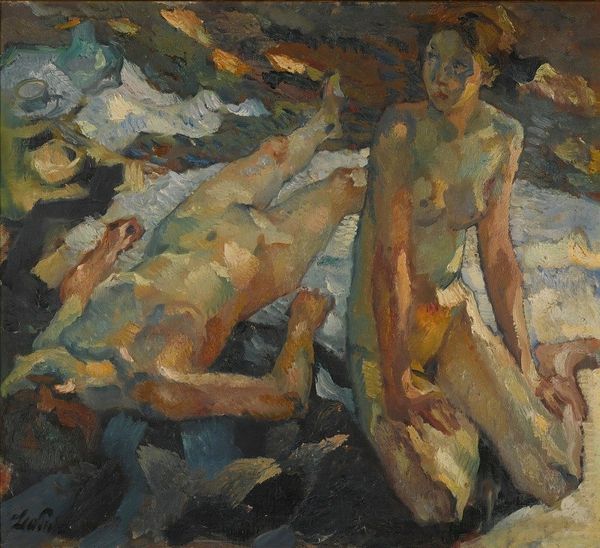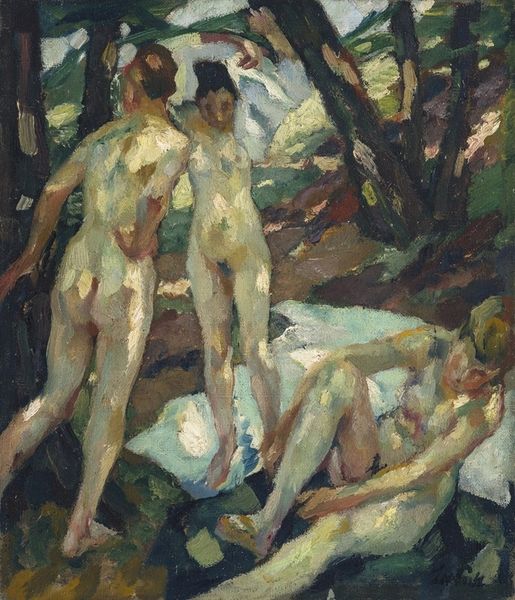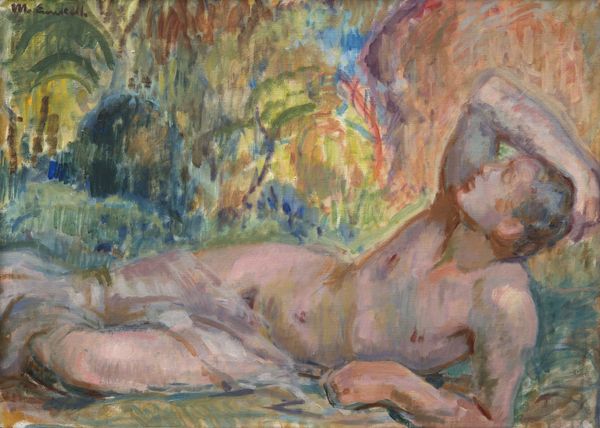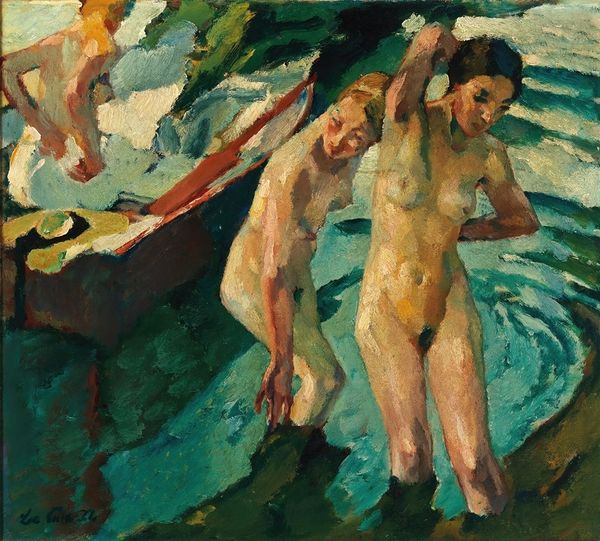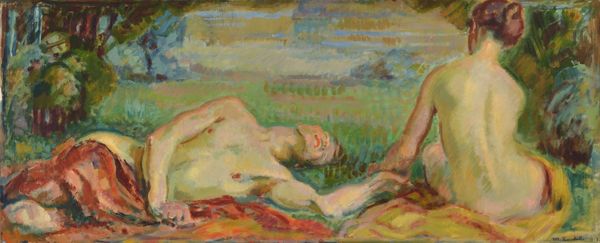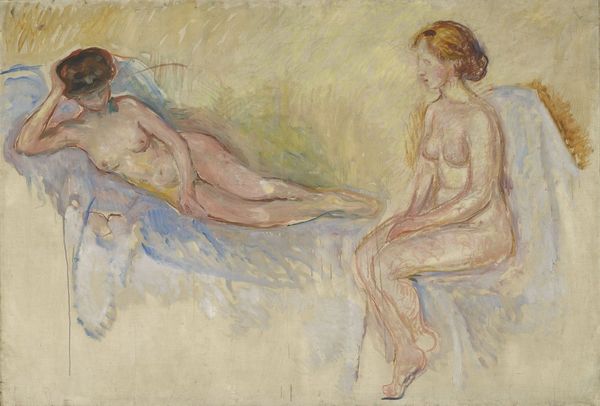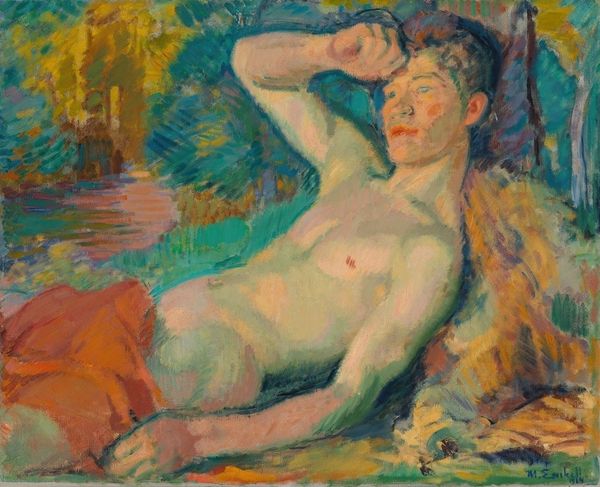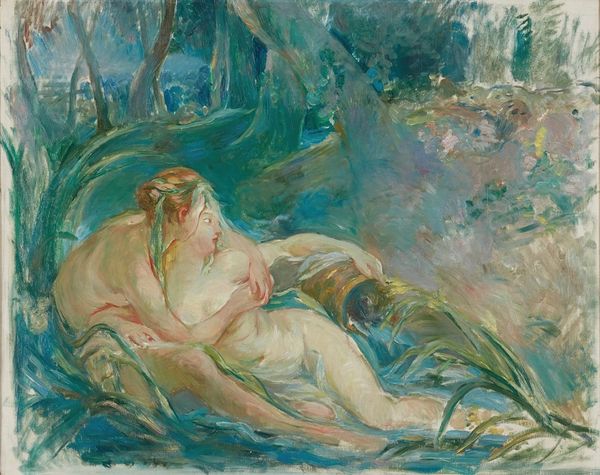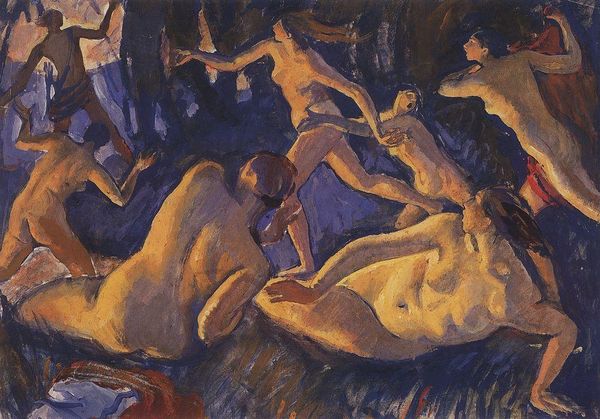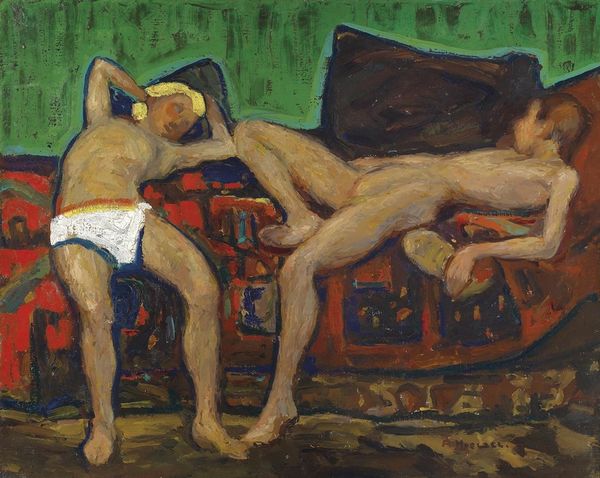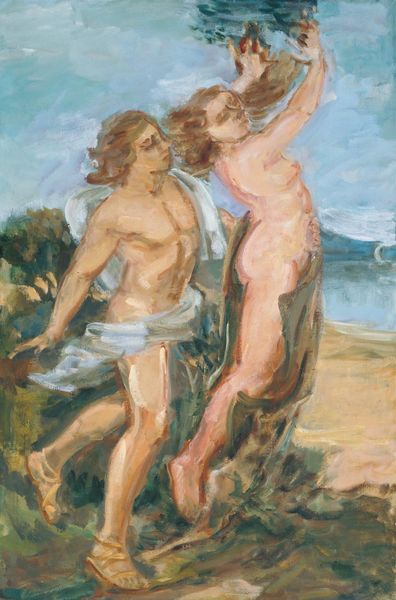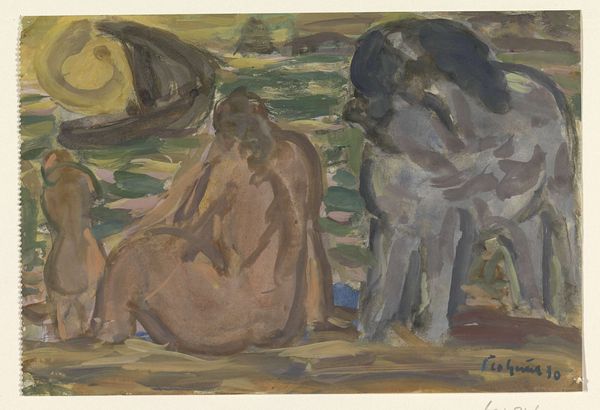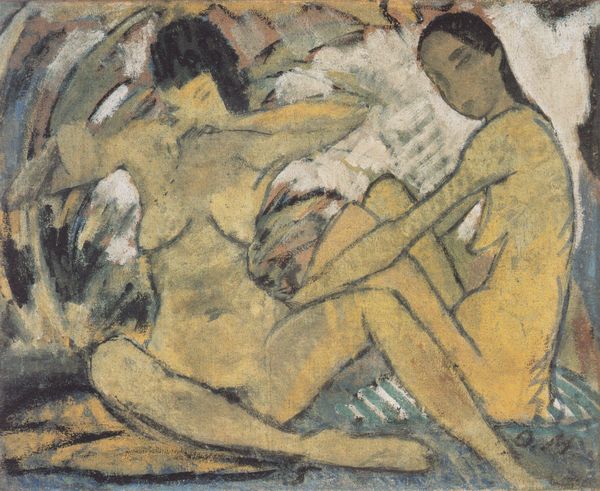
painting, oil-paint
#
portrait
#
figurative
#
painting
#
oil-paint
#
impressionist landscape
#
oil painting
#
expressionism
#
painting painterly
#
genre-painting
#
nude
#
expressionist
Copyright: Public Domain: Artvee
Curator: Leo Putz created this oil painting, titled "Ein Sommertag" in 1925. The style, as I see it, borders between Expressionism and Impressionism. What do you make of it? Editor: It’s... unsettling. There's a strange passivity to the figures despite their nudity, a dreamlike quality undercut by the almost violent brushstrokes and color choices. What do we know about the materials Putz employed and his technical approach to this genre piece? Curator: Putz's visible brushwork gives us a sense of how constructed it all is, the very labor of representation laid bare. This isn't simply a scene; it’s deliberately, overtly painted. It speaks to how he treated the very substance of painting—oil paint. Editor: Agreed, it is impossible to ignore the constructed nature of the piece. How much can we read this through the lens of gender and sexuality in the Weimar Republic? There's a definite ambiguity here. The composition, particularly the interaction between the figures, isn’t inherently erotic, which actually makes it more suggestive and disruptive to conventional representations. Curator: It could also be read simply as exploring the beauty of the human form, removed from any specific narrative beyond leisure, in an Edenic natural state... Putz's manipulation of paint and color becomes its own kind of spectacle. Editor: But even that act of removing the figures from narrative *is* a narrative choice. These choices can and should be interrogated through contemporary dialogues and social movements—how we understand representation, power, and the male gaze. The almost primitive rendering, especially of the facial features, raises further questions about identity and idealization. Curator: Fair point. But it is still very much about technique and application! Putz carefully orchestrates the entire thing and allows visible strokes to disrupt notions of pictorial depth, forcing viewers to confront its constructed nature. Editor: That constructedness allows us to project different potential narratives and ask crucial questions, shifting what we might expect of this kind of figurative subject matter. I can't help but view it from this more inquisitive perspective. Curator: Right. It all becomes richer as we add perspectives!
Comments
No comments
Be the first to comment and join the conversation on the ultimate creative platform.
